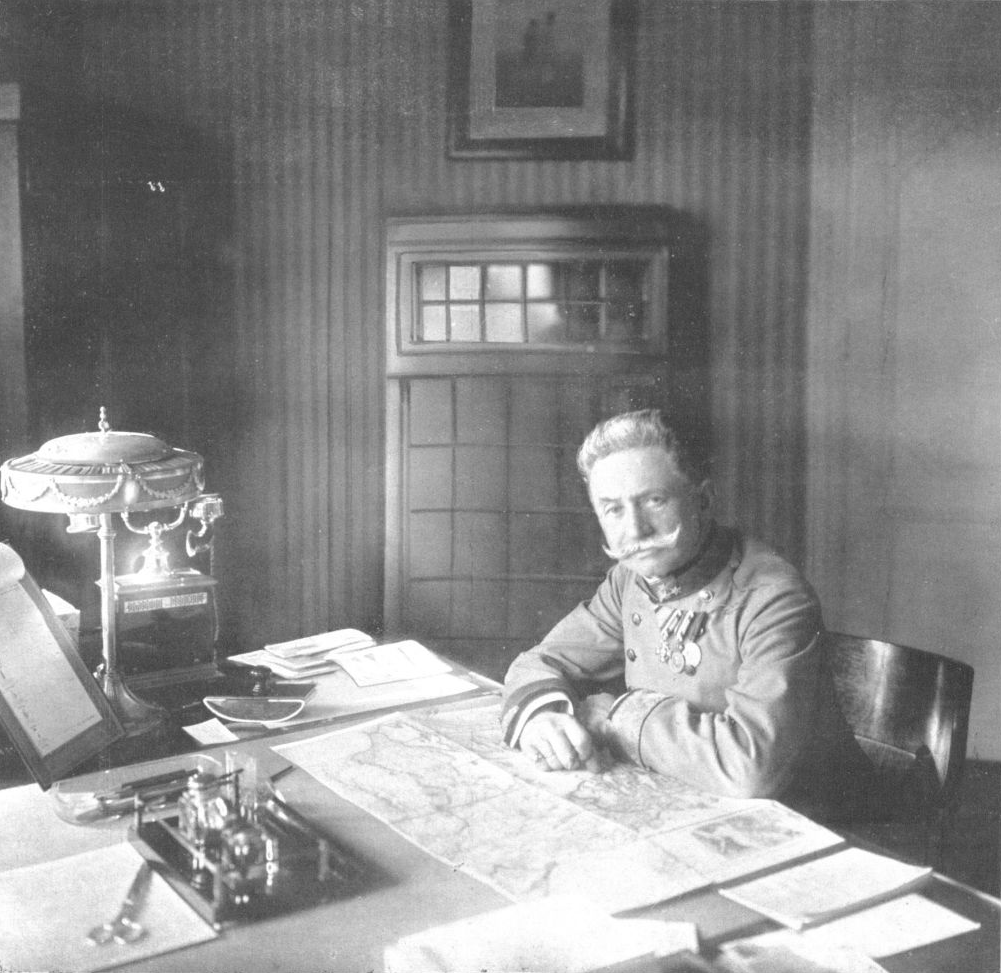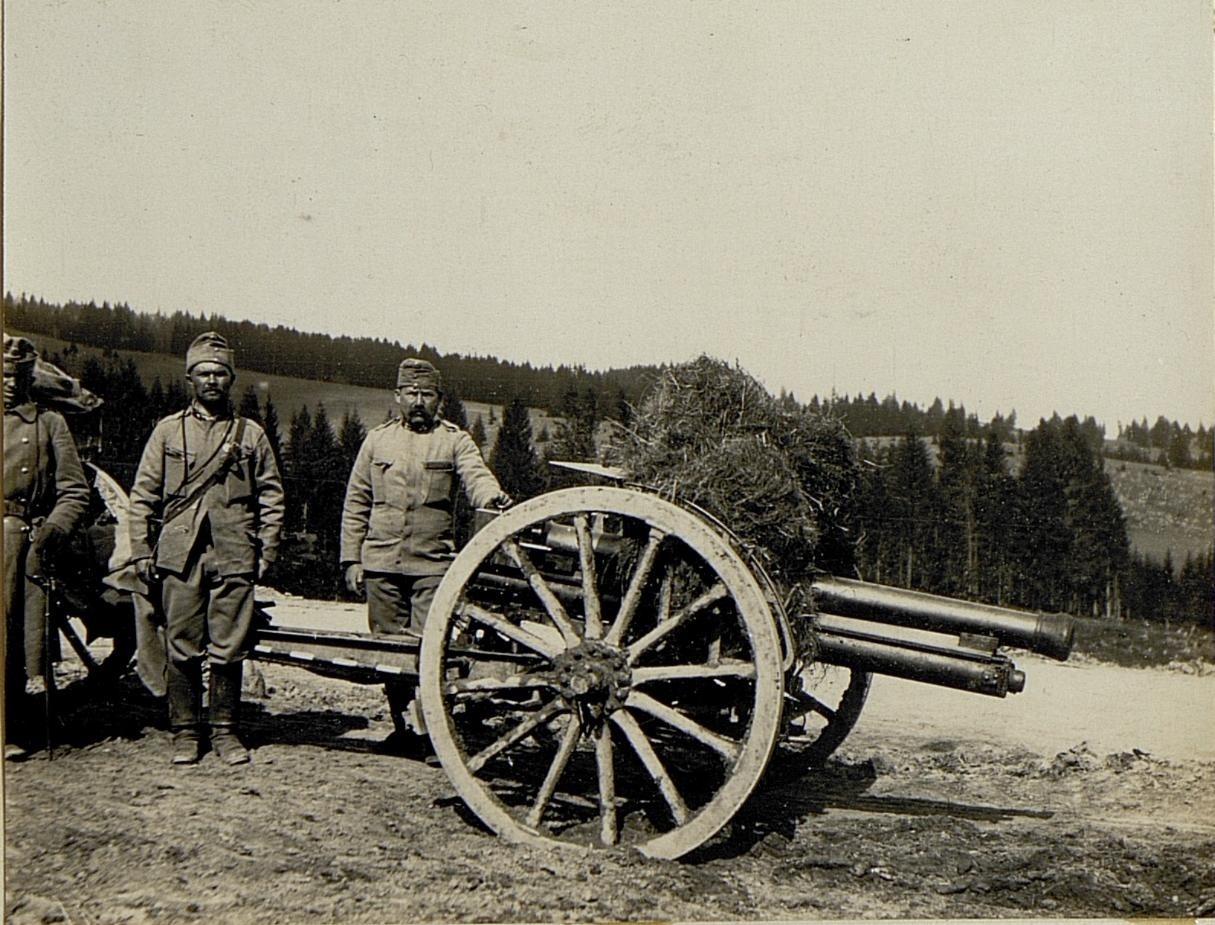| Edelweiss Division:
Limanowa: The Preliminaries
By Mike Bennighof, Ph.D.
May 2024
 Note: The December 1914 Battle of Limanowa is the theme of Infantry Attacks: Edelweiss Division, which has 30 new scenarios based on the battle. Note: The December 1914 Battle of Limanowa is the theme of Infantry Attacks: Edelweiss Division, which has 30 new scenarios based on the battle.
As the Great War’s first winter closed onto the Eastern Front, it became obvious that the troops would not be home for Christmas. And the leaves had fallen from the trees weeks earlier. The Russians enjoyed a series of successes, in major battles at Warsaw and Lodz, and in countless smaller actions. The Austrians had been pushed back to the Carpathian Mountains, while the vaunted Germans had been fought to a standstill.
Austria-Hungary’s proud Imperial and Royal Army, guardian of the monarchy for four centuries, had been largely destroyed, its divisions filled with fresh recruits and men of the Landsturm reserve. Austro-Hungarian factories labored frantically to not just replace lost artillery pieces, but replace all of the army’s hopelessly obsolete cannon with modern new pieces.
And the situation on the ground seemed even worse. To the east of Krakow, the Russians built up a threat to the ancient city. But by late November 1914, the Russian Third Army’s advance had finally been halted in the city’s outskirts by a motley assortment of Landsturm militia. To its east the Russian Eighth Army had pushed between the Austro-Hungarian Third and Fourth Armies
Austro-Hungarian chief of staff Franz Conrad von Hötzendorff believed this situation called for an attack. This was his standard response to all situations, be they favorable, unfavorable, or neutral (and had been his consistent answer to every political crisis during peacetime, too). With the Austro-Hungarian forces exhausted and worn down, and no chance of significant German reinforcements, the upcoming battle seemed destined to become yet another bloody catastrophe to lay at the feet of the stunningly incompetent Conrad.

From this desk, Franz Conrad von Hötzendorff destroyed a thousand-year monarchy.
But Conrad had correctly identified a weakness in the Russian position, one that also worried the commander of the Russian Southwestern Front, Nikolai Ivanov. The Russian Third Army’s westward advance on Krakow and the neighboring Eighth Army’s advance southward to the foothills of the Carpathians had separated them. Austria-Hungary’s radio intelligence operation picked up the widening gap. Conrad believed that an attack against Third Army’s southern, left flank would at the very least force it to retreat and possibly allow the flank to be rolled up. He asked his German allies for the troops to undertake the offensive.
After months of listening to Conrad’s grandiose schemes, his German counterpart, Erich von Falkenhayn, was having none of it. Conrad could use the one German division already sent to his front to aid in the defense of Krakow, but otherwise would be on his own to scrape up the troops for his proposed offensive. Preparations began on 26 November 1914.
At the core of his attacking force would be the XIV Corps, withdrawn from Fourth Army’s front north of Krakow and shuffled southward along a lone, single-tracked railway. The corps at this point included the 3rd “Edelweiss” and 8th “Kaiserjäger” infantry divisions, still considered elite despite their massive losses since the start of the war and absorption of thousands of replacements, and the 13th Landwehr Infantry Division (from the regular army of the Austrian half of the Dual Monarchy), for a total of three Austro-Hungarian divisions plus the one German division. Josef Roth, the corps commander, would lead this detachment, further reinforced with three vastly-understrength Austro-Hungarian cavalry divisions and the somewhat dubious aid of the Polish Legion.
To further protect the flank and rear of Roth’s force as he attacked, Conrad ordered the neighboring Austro-Hungarian Third Army to attack as well. A gap of 100 kilometers had opened between the two Austro-Hungarian armies, and Third Army commander Svetozar Boroević told Conrad’s headquarters that his troops could not hold their current positions, let alone attack. Conrad insisted that Boroević attack the Russians at Bartfeld, on the western flank of the Russian Third Army, and then issued contradictory orders demanding an attack against them at Neu-Sandez, about 50 kilometers to the north-west. Typically, Conrad when questioned responded with an order to do both. Adding to Boroevic’s aggravation, Hungarian Prime Minister István Tisza continually telephoned the Austro-Hungarian Third Army headquarters with increasingly-frantic demands that the Russians be prevented from breaking through the Carpathians into Hungary.
The shattered IX Corps on Boroević’s left flank clearly could do nothing, and the 4th Cavalry Division guarding the army’s open flank, even reinforced by Landsturm militia, could do little more. Boroević detailed the operational group led by Feldmarschall Leutnant (FML) Sándor Szurmay to undertake the assault. Szurmay had just his own weakened 38th Honvéd Infantry Division, and Boroević gave him the Third Army’s only division at anywhere near full strength, Adolf Kornhaber’s newly-arrived Combined Honvéd Infantry Division, an ad hoc outfit with 12 recently-raised battalions (Tisza had never wanted this war, but despite his panicked screams he worked resolutely to make it succeed). Szurmay would first attack Bartfeld, then march on to Neu-Sandez, satisfying at least the letter of Conrad’s orders.

Austria-Hungary’s outdated steel-bronze 8cm (76.5mm) Model 1905 field gun.
The divisions tabbed for the attack could only arrive slowly over the thin and over-burdened Austro-Hungarian railway network. Making things worse, the German 47th Reserve Division, from which Conrad expected great things simply because it was German, dithered after detraining and reached its assembly areas late. The German division had only arrived in Krakow on 28 November, coming from the Western Front.
On the Russian side, Ivanov worried that the movements detected on the Austrian side of the line portended exactly what Conrad intended: an attack on the gap between his armies. He ordered Eighth Army commander Alexei Brusilov to dispatch two corps from his left, eastern flank to fill it. That removed the formations screening the ongoing siege of Przemyśl, but Austrian intelligence did not pick up the move, and the Austrian commanders believed Neu-Sandez held by only a few battalions rather than two Russian divisions with more on their way. Roth foresaw the threat to his flank and wanted to screen the approach from Neu-Sandez with the Germans and the three depleted cavalry divisions, but his boss Archduke Joseph Ferdinand overruled him and only allowed the cavalry to ride eastwards.
As if the threat to his open right flank were not enough, Roth quickly found that the Russians had advanced to positions almost on top of his deployment areas. Before the offensive could even begin, his first divisions to arrive, the 13th Landwehr and 3rd “Edelweiss,” had to drive them off so that his following two divisions (8th “Kaiserjäger” and the German 47th Reserve), and the Polish Legion, even had room to deploy.
The battle had not properly begun when skirmishing broke out between the 13th Landwehr, fighting alongside the remnants of the 6th Cavalry and 11th Honvéd Cavalry Divisions, and the Russian 3rd and 11th Cavalry Divisions, guarding the left end of the Russian Third Army’s line, began on 1 December and became intense at times. By the 3rd the Russians had been driven back sufficiently to allow the offensive to begin, with Roth’s four divisions in line from west to east, the tiny cavalry divisions flung out to the east as flank guard, and the Polish Legion protecting the refused right flank of the 13th Landwehr Division.
You can order Edelweiss Division right here.
Please allow an extra three weeks for delivery.
Sign up for our newsletter right here. Your info will never be sold or transferred; we'll just use it to update you on new games and new offers.
Mike Bennighof is president of Avalanche Press and holds a doctorate in history from Emory University. A Fulbright Scholar and NASA Journalist in Space finalist, he has published a great many books, games and articles on historical subjects; people are saying that some of them are actually good.
He lives in Birmingham, Alabama with his wife and three children. He misses his dog, Leopold.
Want to keep Daily Content free of third-party ads? You can send us some love (and cash) through this link right here.
|
